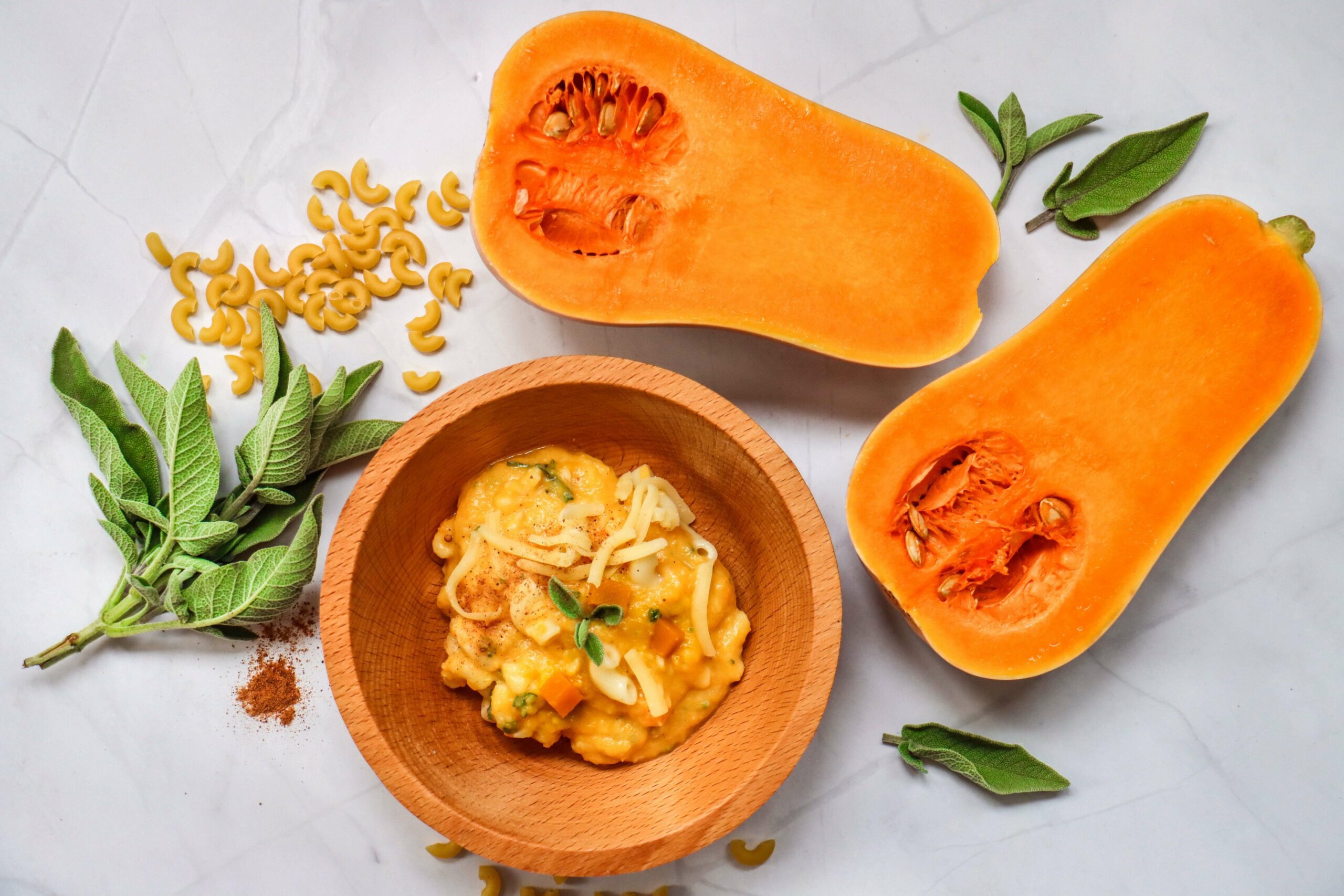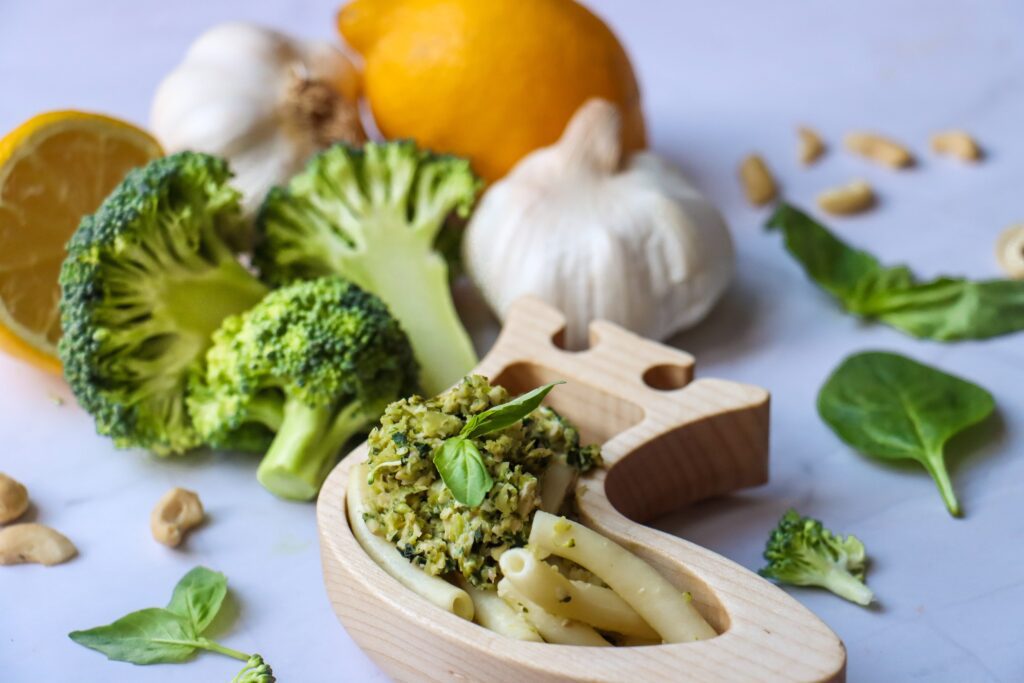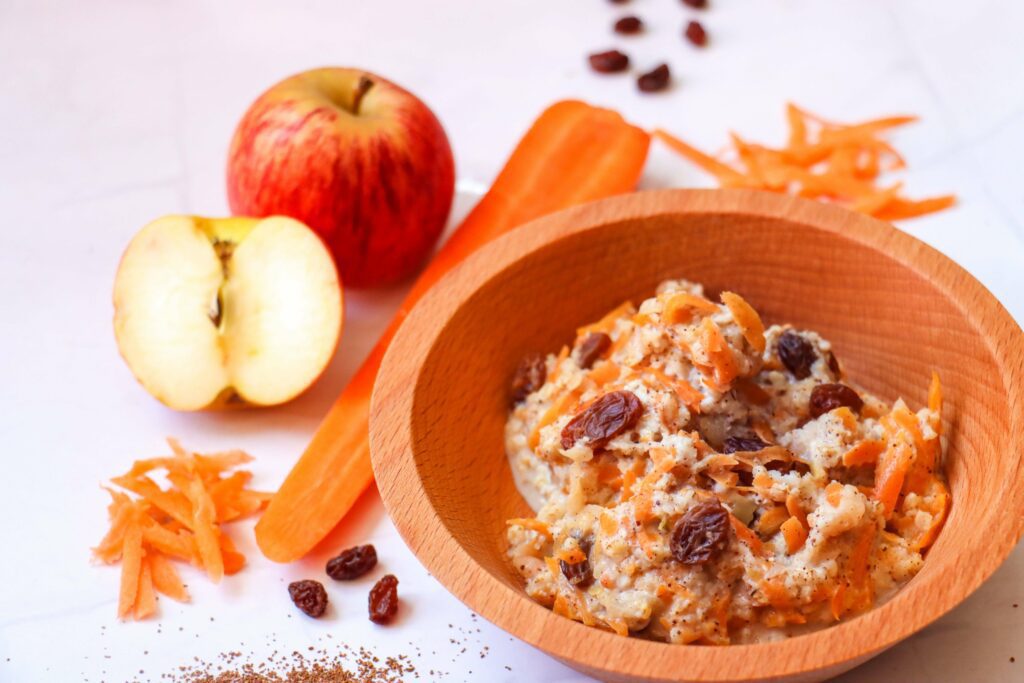
When a child first embarks on their big ‘food journey’ it is one of the most exciting times – it’s the moment your baby will be experiencing life through different flavours and textures. We are moving on from the perception of only offering our babies beige and bland foods and shifting mindsets to offering a range of fresh and diverse ingredients. I often hear about the challenges and anxieties associated with ‘cooking separately’ for baby, due to the difficulty of not being able to season food and the big misconception that spices are unsafe for babies. Herbs and spices actually have medicinal properties which could help different ailments – from building you baby’s immunity to helping with teething pain.
At The Flavour Academy we believe in giving little tummies big flavours, I emphasise on the importance of creating great tasting and flavourful meals and ensuring your baby is well nourished. When your baby starts to eat solids, it is the time he/she is learning about different aspects about food and ultimately, by offering a variety of flavours it decreases the chances of them being picky eaters later in life.
If your baby is doing well with foods, below are a few of our in-house tips and tricks I’ve put together on how to safely add flavour to your baby’s meals. Although, consult your health adviser or paediatrician beforehand if you have any concerns. Using salt and sugar as flavour enhancers is not recommended, especially for babies, as they could cause various health risks as well as potentially increasing their taste preferences for salty and sweet foods early on, developing unhealthy eating habits later in life.

Fresh herbs such as basil, coriander and parsley are great for lifting baby purees as well as bean, lentil and meat dishes. Blitz herbs with water and add to boiling rice for a colourful and yummy ‘green rice’. Pesto is also a great way to introduce a variety of herbs.
Dried herbs such as rosemary, oregano, thyme and mixed herbs create a delicious depth of flavour, they can appear stronger than fresh herbs.

When planning and cooking your baby’s meals, using a variety of ingredients expands the palate. It is important to think about seasons and the produce available according to the time of the year. In addition, transforming and being creative with ingredients will allow your baby to further understand foods. For example, I created this Butternut Mac N Cheese recipe to showcase how you can turn a simple classic dish into a hearty, healthy and flavourful meal for your little one using your Baby Brezza Deluxe Food Maker.
Spices are a fantastic way to add flavour easily as they possess aromatic, sweet and woody characteristics. Whole spices such as cinnamon, cardamom and cloves can be used to infuse flavour and aroma into dishes through poaching liquids or during steaming. Ground spices with an earthy yet sweet flavour elevate fruits, vegetables and savoury dishes. Ground nutmeg, cumin, coriander, cinnamon and cardamom are ‘baby-friendly’ – don’t forget a little goes a long way so just a small pinch will be ample to tickle those tiny taste buds. Hotter spices (chilli, black pepper, paprika) which create a sense of heat and trigger pain receptors should be introduced later at around 1 year in small quantities.
Herbs and spices create a wonderful sensory experience for your baby, it is important to note the quantity of food vs the amount of herb or spice you add – over seasoning could lead to overwhelming the meal. Try some of these recipes that include a variety of different spices:
The final flavour of a dish depends on how ingredients have been prepared and cooked. Think about exposing your baby to different textures – how many ways can you present the same ingredient? Different cutting techniques will provide different textures as well as flavour. Vegetables which are diced small will 1. cook faster (smaller surface area) 2. will appear more intense in flavour. Grating fruit and vegetables will release more aroma and create a more exciting sensory experience for your baby.

Different cooking techniques will effect ingredients’ structure and ultimately texture and flavour. Slowly roasting and grilling vegetables will create a deeper flavour of sweetness as sugars naturally present within the vegetables will brown and caramelise. In addition, meat flavour is also intensified with this process. Poaching ingredients particularly fruit and meat allows a softer and more digestible texture to be maintained but also allows for herb and spice infusions to take place through the liquid. Steaming is one of the most recommended cooking methods for making baby food – add some fresh herbs, a pinch of ground spices, fresh garlic, ginger to ingredients during steaming as this process also creates another layer of flavour for your baby to experience.
We like to think of your baby’s palate like a blank canvas, through our tips and tricks on getting you into the ‘sensory mindset’ when cooking for your baby, we want to empower you paint the best picture for your little bub. Happy cooking Mamas! You got this!
See here our Baby Brezza Food Maker Deluxe, which includes the weaning guide including plenty of flavourful recipes for those tiny tummies!
Cheeky Rascals Limited is a company registered in England & Wales (registered number: 3933118) whose registered office is at Liss Mill, Mill Road, Liss, England, GU33 7BD. VAT number: GB GB689097664. ©2021. All rights reserved.